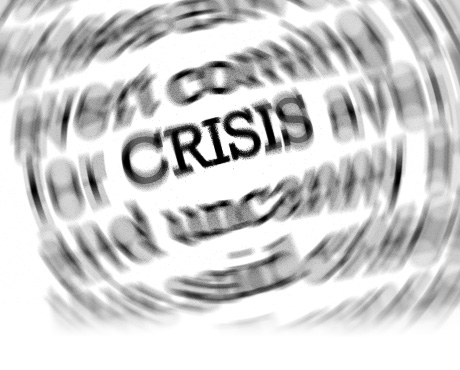Reputation Recovery Examples: Successful Turnarounds
When a company’s reputation takes a hit, the path forward can seem insurmountable. Yet history shows us that some of the world’s most recognized brands have faced severe reputation crises and emerged stronger than before. These recovery stories offer more than just inspiration—they provide a roadmap for organizations navigating their own challenges. By examining how companies like Domino’s Pizza, Starbucks, Uber, and others successfully rebuilt trust with their customers, we can extract actionable strategies that apply across industries. The lessons learned from these real-world examples demonstrate that reputation recovery isn’t just possible; when handled correctly, it can actually strengthen customer relationships and create lasting business value.
Domino’s Pizza faced a significant reputation crisis in the late 2000s when customer satisfaction plummeted and the brand became synonymous with poor quality. Rather than deflecting criticism or making incremental changes behind the scenes, Domino’s took a bold approach that would become a textbook example of reputation recovery through radical transparency.
When a company's reputation takes a hit, the path forward can seem...
Social Media Crisis Management For Cybersecurity Incidents
Social media plays a vital role in managing cybersecurity incidents and maintaining stakeholder trust during digital crises. When security breaches occur, organizations must respond quickly and effectively across social platforms to protect their reputation and keep stakeholders informed. According to recent studies, companies that respond to data breaches within the first 24 hours maintain significantly more public trust than those that delay their communications. This article provides a detailed guide for cybersecurity professionals and communications teams on creating real-time updates, managing public reactions, and monitoring sentiment during cybersecurity incidents on social media platforms.
A strong crisis response starts with the right team structure. Your crisis response team should include representatives from social media, public relations, legal, human resources, and executive leadership. Each team member needs clearly defined roles and responsibilities to ensure rapid, coordinated responses when incidents occur.
Social media plays a vital role in managing cybersecurity incidents and...
Real-Time Crisis Management on Twitter: A Guide
Social media crises can erupt at any moment, spreading rapidly across Twitter and threatening brand reputation within minutes. Recent data shows that 71% of consumers who experience a negative interaction with a brand on social media will share that experience with others. For social media managers and communications professionals, having a tested crisis management strategy isn’t optional—it’s essential for survival in today’s connected world. This comprehensive guide provides the tactical framework and practical steps needed to detect, manage, and recover from social media crises in real time.
Identifying potential crises before they spiral out of control requires robust monitoring systems and clear trigger points for escalation. According to Sprinklr’s 2024 Social Media Crisis Management Report, organizations with AI-powered social listening tools detect potential crises up to 4 hours earlier than those relying on manual monitoring alone.
Social media crises can erupt at any moment, spreading rapidly across Twitter...
Effective Crisis Management Strategies For Social Media For PR and Brand Pros
Social media backlash can strike any brand without warning, turning a minor misstep into a full-blown crisis within hours. Research shows that 96% of brand crises spread internationally within 24 hours, making rapid response essential for damage control. The rise of call-out culture and viral criticism means organizations must prepare for and professionally manage negative social media reactions. This guide provides proven strategies, frameworks, and actionable steps to help PR professionals and brand managers effectively handle social media backlash while protecting brand reputation and maintaining stakeholder trust.
When facing social media backlash, the first few hours are critical. Studies by Sprinklr indicate that brands responding within 2 hours of a crisis breaking see 61% better sentiment recovery compared to delayed responses. Here’s how to quickly assess and address emerging situations:
Social media backlash can strike any brand without warning, turning a minor...
The Role of Legal Counsel in PR Crises
Public relations crises can strike any organization without warning, making the partnership between legal counsel and PR teams critical for effective crisis management. When reputation and legal risks collide, organizations need a coordinated response that protects both their public image and legal interests. Legal counsel plays an essential part in crisis management, from initial response through long-term recovery, working alongside PR professionals to navigate complex situations while maintaining legal compliance and stakeholder trust.
Legal counsel’s involvement in crisis management has become increasingly important as organizations face heightened scrutiny and regulatory requirements. According to a 2023 study by Deloitte, 79% of organizations that successfully managed major crises credited strong collaboration between their legal and PR teams as a key factor. This collaboration starts well before any crisis occurs, with legal counsel providing guidance on potential risks and helping develop crisis management frameworks.
Public relations crises can strike any organization without warning, making...
Budget-friendly Crisis Management Strategies For Small Businesses
Managing a crisis doesn’t require deep pockets – it demands smart planning and resourceful thinking. Small businesses and organizations can build effective crisis management strategies without breaking the bank by focusing on practical, low-cost solutions. Research shows that 40-60% of small businesses never reopen following a disaster, according to FEMA. But with proper preparation and budget-conscious planning, organizations can weather storms and emerge stronger. This comprehensive guide will show you exactly how to create and implement cost-effective crisis management strategies that protect your business, maintain stakeholder trust, and ensure continuity when challenges arise.
Before implementing specific strategies, organizations must understand their unique vulnerabilities and requirements. Start by conducting a thorough risk assessment to identify potential threats to your business. This doesn’t require expensive consultants – gather key team members to brainstorm scenarios that could impact operations, from natural disasters to cyber attacks to public relations issues.
Managing a crisis doesn't require deep pockets - it demands smart planning and...
How To Communicate Transparently With Local Media During A Crisis
Managing a public relations crisis requires swift action and strategic communication through local media channels. When organizations face reputation challenges, their response through local media can make or break public trust. Local media remains a powerful force in shaping community perceptions, with 75% of Americans trusting their local news organizations more than national outlets, according to a 2023 Pew Research study. This guide will show you how to work effectively with local media during crisis situations, build strong relationships with journalists, and turn challenging moments into opportunities for strengthening community connections.
Local media serves as a direct line of communication to your community during difficult times. These outlets understand local context, maintain strong community relationships, and can help organizations communicate more effectively with their immediate stakeholders. According to the Reuters Institute Digital News Report 2023, local news consumption increased by 15% during crisis events, highlighting its critical role in information dissemination.
Managing a public relations crisis requires swift action and strategic...
Identifying Potential Crisis Scenarios for Effective Risk Planning
Organizations face an increasing array of potential crises that can disrupt operations, damage reputations, and impact stakeholders. According to a 2023 PwC Global Crisis Survey, 95% of business leaders expect to face a crisis within the next two years, yet only 39% feel highly confident in their ability to respond effectively. Identifying potential crisis scenarios before they materialize allows organizations to develop targeted response plans, allocate resources efficiently, and minimize negative impacts when incidents occur. This comprehensive guide will help risk managers and organizational leaders establish systematic approaches to crisis identification and preparation.
Crisis scenarios come in many forms and can affect organizations differently based on their industry, size, location, and operational model. Natural disasters, cybersecurity breaches, workplace violence, product recalls, financial misconduct, and public relations issues represent just a few potential threats. The Institute for Crisis Management reports that 65% of organizational crises are “smoldering” issues that could have been identified and addressed before escalating into full-blown emergencies.
Organizations face an increasing array of potential crises that can disrupt...










